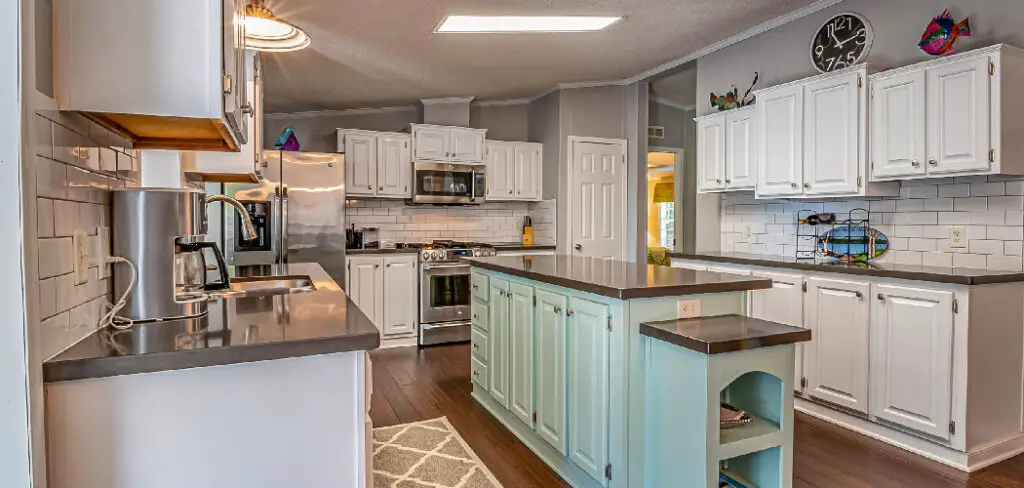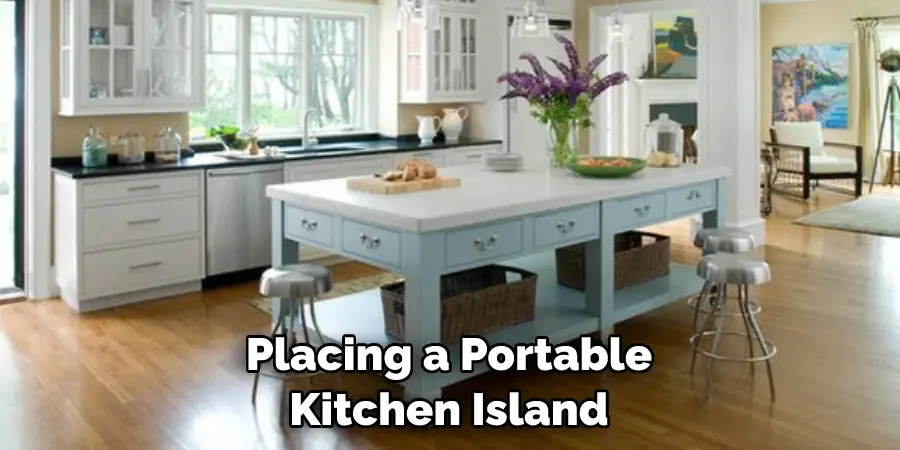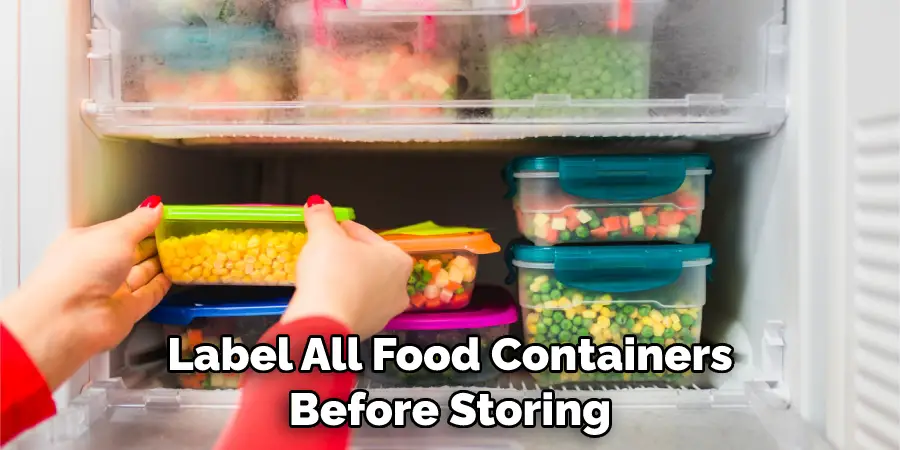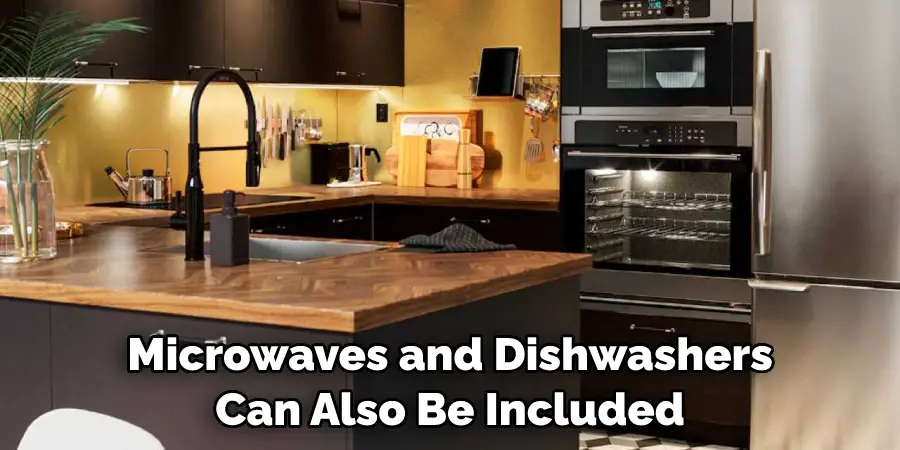Are you in the midst of a kitchen remodel? If so, then you know how difficult it can be to cook and eat without having access to your regular appliances and counter space. With a little bit of creativity and planning, however, you can easily create a temporary kitchen set up as an alternative while your permanent spaces are being worked on.

In this blog post, we’ll discuss step-by-step instructions on how to set up a temporary kitchen during remodel —so that despite any construction delays or difficulties, meal prep doesn’t have to suffer!
Step by Step Guidelines on How to Set Up a Temporary Kitchen During Remodel
Step 1: Choose a Space
The first step to setting up your temporary kitchen is to choose a space that has access to electricity and water. This could be an empty room or corner in your house or even the garage. The key is to make sure you have room for all of the necessary accessories. Choosing a spot close to the regular kitchen can also be helpful since you’ll have easy access to food and cookware.
Step 2: Set Up Appliances
The next step is to set up your appliances and other essentials. This includes items such as a mini-fridge, microwave, electric hot plate, portable oven, and toaster. You may also want to bring in a few items from the original kitchen like a coffee pot, blender, or stand mixer. Once you have all your appliances set up and connected, you’ll be ready to start cooking!
While setting up appliances, make sure to keep safety in mind. Avoid running electrical cords across doorways and other spaces that can be a tripping hazard.
Step 3: Create the Counter Space
To create extra counter space, you may want to invest in a portable island or bring in an old table from another room. Another option is to purchase a foldable countertop that can be put away when not in use. When setting up the counters, make sure to leave a few feet of space between the walls and any other items for safety reasons.

Step 4: Stock Up on Supplies
Once the appliances are set up, it’s time to stock up on supplies. This includes things like dishes, utensils, storage containers, and other staples that will make your temporary kitchen functional. Don’t forget to also bring in a few additional items such as measuring cups, cutting boards, and pot holders.
Step 5: Get Organized
Finally, make sure to organize the space so it is easy to find items when you need them. This could include putting all cooking supplies in one area and food storage containers in another. You might also want to label shelves or drawers so that everything has a designated space.
With these five steps, you’ll be able to set up a temporary kitchen during remodel with ease. Follow the tips outlined here, and you’ll soon be back to cooking and enjoying meals in no time! So don’t let a kitchen renovation get you down — with a little bit of planning, you can make it an enjoyable experience. Good luck! Happy cooking!
Additional Tips and Tricks to Set Up a Temporary Kitchen During Remodel
1. When setting up a temporary kitchen during remodeling, make sure to designate an area in your home that is dedicated exclusively to cooking. This might be a spare bedroom, garage, or basement. Keep this space clutter free and well-lit so you can easily move around the area while prepping meals.
2. Utilize counter space by placing a portable kitchen island or cart near the temporary cooking area. This will provide an additional work surface for chopping, mixing, and other food prep tasks.

3. Invest in some basic kitchenware such as pots, pans, and utensils that can be used in the temporary kitchen during remodeling. Reusable storage containers and Tupperware can also come in handy when storing leftovers for later meals.
4. Utilize outdoor space if you have it available. Setting up a temporary kitchen outside on a patio or deck can be great for grilling, barbecuing, and other outdoor cooking activities while your main kitchen is being remodeled.
5. If your temporary kitchen space doesn’t have a sink, invest in plastic containers or bins to be used as sinks while you prepare food. This will allow you to easily transport water and wash dishes without having to leave the kitchen area.
6. Keep cleaning supplies on hand for quick cleanup. Having some all-purpose cleaners, paper towels, and sponges available will make it easy to quickly clean up any messes that might occur while you are cooking in the temporary kitchen.
7. Try to keep your meals as simple as possible while remodeling. This will minimize the preparation time and help make sure that you aren’t over-complicating the cooking process.
Following these tips and tricks will help you set up a functional and safe temporary kitchen while your main kitchen is being remodeled. Although it may take some time to get used to, having a designated area for cooking will make meal preparation easier and more enjoyable during the remodeling process.
Precautions Need to Follow for Setting Up a Temporary Kitchen During Remodel
1. Make sure you have all the necessary equipment for cooking and eating, such as plates and utensils.
2. Consider investing in some quality plastic storage containers to store food and other items that may not be used often while the kitchen is under construction.
3. Ensure proper ventilation by opening windows or using a fan.
4. Make sure all cords are tucked away and out of the way to prevent tripping hazards or the risk of electrocution.
5. Clean up any messes immediately so that dust and debris from construction do not accumulate in the area.
6. Label all food containers before storing, so you can easily find what you need when preparing meals.

7. Consider investing in a mini refrigerator and/or microwave to make meal preparation easier.
8. Make sure all food items are sealed properly and stored away so they don’t get contaminated with dust or debris from construction activities.
With the precautions taken, setting up a temporary kitchen during remodeling can help keep you and your family safe while the new kitchen is being installed. It will also give you an opportunity to become more creative with meal preparation and storage solutions so that you can continue enjoying all the benefits of cooking in a fully-functional kitchen even while it is under construction.
Frequently Asked Questions
How Long Will It Take to Set Up a Temporary Kitchen?
The length of time required to set up a temporary kitchen will vary depending on the size and complexity of your remodel project. Generally, most simple setups can be completed in an afternoon or two, while more complex projects may require several days to complete.
How Much Does It Cost to Set Up a Temporary Kitchen?
The cost of setting up a temporary kitchen can range from very affordable to quite costly, depending on the supplies and equipment you choose to use. Basic setups with minimal items will be more affordable than those that include high-end appliances and luxury accessories.
Should I Hire a Professional to Set Up My Temporary Kitchen?
Whether you choose to hire a professional or do the setup yourself will depend on your budget and experience level. If you have limited time and/or are unfamiliar with the process of setting up a temporary kitchen, it is generally recommended that you seek out professional help. However, if you are confident in your abilities, setting up the kitchen yourself is a great way to save money.
What Items Do I Need to Set Up a Temporary Kitchen?
The items you will need to set up your temporary kitchen will vary depending on the size and scope of your project. At a minimum, you will likely need some type of sink, stovetop, refrigerator, and counter space. Additional items such as microwaves and dishwashers can also be included depending on your preferences.

Is There Anything Else I Should Consider When Setting Up a Temporary Kitchen?
When setting up a temporary kitchen, it is important to make sure that you have adequate space for your items. In addition, it is also important to make sure that all of the components are securely connected and in proper working order prior to use. Lastly, be sure to keep safety in mind by ensuring that cords are not exposed and that any hot surfaces (i.e. stovetop) are kept away from young children.
Conclusion
Knowing how to set up a temporary kitchen during remodel is a great way to minimize disruption and get the job done quickly. With careful planning and an understanding of the basics, you can easily set up your own temporary kitchen in no time.
Be sure to take into account factors such as cost, safety, and space requirements when making decisions about what supplies and equipment to use. With these tips in mind, you’ll be sure to have a successful and efficient remodel.
Professional Focus
Angela Ervin, a former interior designer turned blogger, specializes in kitchen design and renovations. Through her website, she blends her passion for cooking with design expertise, sharing practical and creative ideas. Known for balancing functionality and beauty, Angela’s insightful content has made her a trusted voice in home design and lifestyle.
About the Author
Angela Ervin, an experienced interior designer and blogger, combines her passion for kitchen renovations with storytelling. Living in Petersburg with her family, she enjoys cooking and testing her projects firsthand. Known for her humor and relatable style, Angela shares creative, functional design insights through her content, making her a trusted voice in home design.
Education History
University: Virginia Commonwealth University
Degree: Bachelor of Fine Arts (BFA) in Interior Design
- Angela’s education at VCU focused on mastering core interior design principles, including spatial planning, color theory, materials selection, and sustainable design practices.
- She gained hands-on experience through studio projects and collaborative design exercises, which honed her ability to create functional and aesthetically pleasing environments.
- Her coursework also emphasized problem-solving and practical applications of design, preparing her for real-world projects like her self-directed kitchen renovations.
- The program’s strong foundation in both technical skills and creative expression shaped Angela’s ability to seamlessly integrate form and function in her work.


